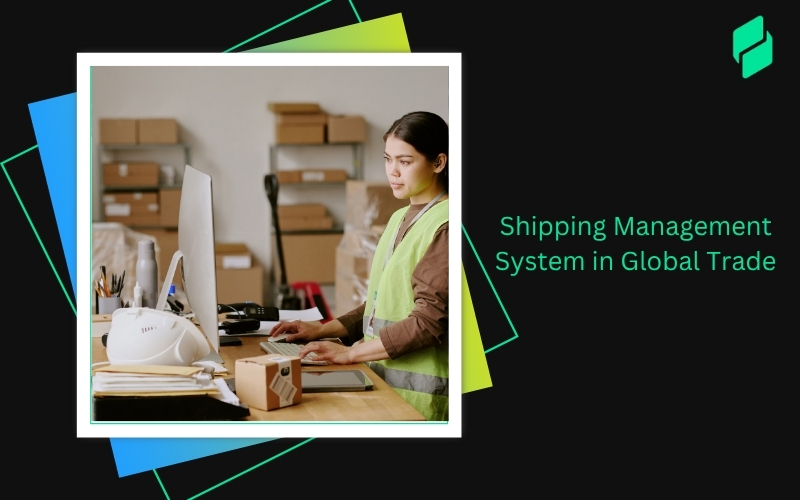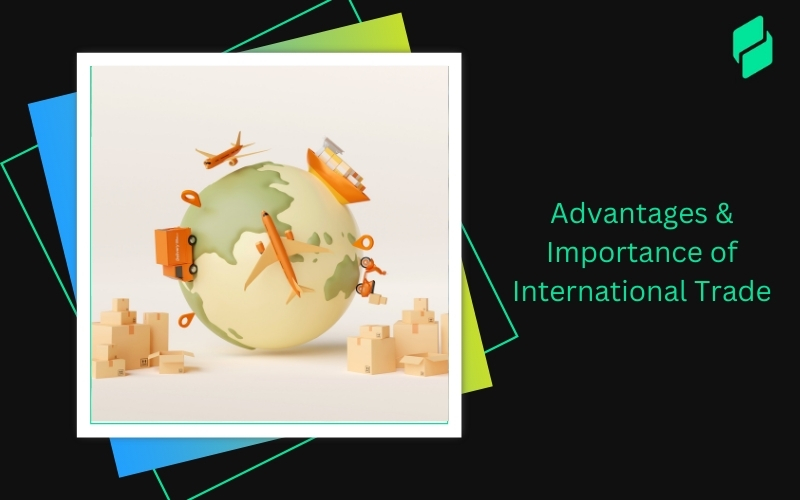Optimize your business: use unlimited savings with Pazago fulfilled now!
Get Started ->Have you ever wondered how companies ensure they have the right materials at the right time to produce their products? Or how do they manage to keep costs low while maintaining high quality?
It's not just about buying and selling; it's about strategic procurement in supply chain management. This pivotal function ensures businesses survive and thrive by making astute purchasing decisions that directly affect their bottom line.
Let's delve into why procurement is more than just shopping for your business and how it strategically positions companies for success.
Procurement: More Than Just Buying
Procurement in supply chain management is your secret weapon for business efficiency. Think of it as the art of acquiring the goods and services that your company needs, but with a strategy in mind.
Unlike simple purchasing, which focuses on short-term needs, procurement involves a long-term plan that aligns with your company's overall goals.
Are you looking to reduce costs, enhance quality, or secure supply chains against disruptions?
Strategic procurement addresses these points by building strong relationships with suppliers, leveraging technology for better inventory management, and constantly analyzing market trends.
Partner like Pazago can streamline this process significantly by providing advanced tools and global exposure.
Strategic Procurement vs. Purchasing
Why is understanding the difference between procurement and purchasing crucial for your business? Imagine you're a chef. Purchasing is like buying ingredients for a single meal – straightforward and transactional.
Procurement, however, is akin to planning the menu for a whole season: it's complex, considers various factors like supplier reliability and ingredient quality, and aims to deliver consistent, cost-effective outcomes over time.
Also Read: Understanding What Are The Elements Of Logistics System?
Different Types of Procurement in Supply Chain Management
Let’s break down each type to see how each plays a crucial role in bringing products and services to your doorstep.
Also Read: Understanding Different Types of Logistics in Supply Chain Management
Components of Procurement in Supply Chain Management

It's not just about negotiating the best prices or selecting the right suppliers; it's about mastering three pivotal components: People, Process, Paperwork, and Technology.
Each element ensures that procurement strategies meet and exceed operational and strategic expectations.
1. People: The Strategists and Executors
Your procurement team is your front line. Are they empowered and skilled enough to tackle the complexities of modern supply chains? Investing in continuous training and development ensures that your team stays ahead in strategic sourcing, negotiations, and relationship management, aligning procurement goals with broader business objectives.
2. Process: The Framework for Operational Excellence
Are your procurement processes as streamlined and risk-averse as they should be? Effective procurement operations require clear, standardized procedures that are regularly updated to reflect changes in market conditions and business strategies. This includes everything from supplier evaluation to purchase requisitions and beyond.
3. Paperwork: The Foundation of Compliance and Transparency
Documentation in procurement is critical. How diligently does your organization handle its paperwork? Proper documentation ensures compliance, supports audit processes and maintains clear records of transactions.
Platforms like Pazago enhance these processes with centralized digital documentation features. which are indispensable for dispute resolution and historical analysis.
4. Technology: The Enabler of Modern Procurement
Is your procurement technology leveraging the latest innovations? Technology transforms procurement by automating routine tasks, providing analytical insights, and facilitating e-procurement solutions that connect and streamline buyer-supplier interactions.
Tools like ERP systems, procurement software, and digital transaction platforms enhance efficiency and provide a competitive edge by enabling data-driven decision-making.
Pazago’s digital trade management system ensures you stay ahead with the latest technological advancements in international trade.
Also Read: Understanding the Importance and Strategies of Retail Supply Chain Management
Simple 5-Step Procurement Process in Supply Chain Management

Ever wonder how businesses maintain consistent quality while managing costs? The answer is a well-orchestrated procurement process within supply chain management.
Let's break down these steps and see how each contributes to a successful procurement strategy in supply chain management.
1. Identification of Need
It all begins with a need. How often do you assess what your business needs to operate or produce efficiently? The first step in the procurement process involves identifying and consolidating these needs.
It's about understanding what materials, goods, or services are essential and quantifying them accurately. This step ensures that every procurement activity aligns with your business goals and demands, preventing wastage and optimizing resource utilization.
2. Vendor Assessment
Once the needs are clear, the next step is finding the right suppliers. This is where RFPs (Requests for Proposals), RFIs (Requests for Information), and RFQs (Requests for Quotations) come into play.
Have you ever wondered how businesses choose whom to buy from? They use these tools to gather detailed information about potential suppliers, assessing their capability, compatibility, and competitiveness. This careful selection process is crucial to ensure quality and reliability in the supply chain.
Also Read: How To Find Export Agents For Your Business
3. Negotiation of Contracts
Negotiation is where the real magic happens. Are you getting the best value for your money? This phase of the procurement process focuses on negotiating the scope, pricing, and terms of contracts to ensure they meet your strategic business needs while being fair to both parties.
Effective negotiation secures advantageous terms, mitigates risks, and establishes a foundation for long-term partnerships.
4. Execution of Purchase Order
With the contract in place, the next step is executing the purchase order. This stage covers the ordering of goods, invoice processing, and payment.
How smoothly does this process run in your organization? Efficient purchase order management is key to timely deliveries, maintaining good supplier relationships, and ensuring no hiccups in the supply chain.
5. Quality Assurance and Performance Monitoring
Lastly, the procurement process doesn't end at the purchase. How do you ensure you got what you paid for? Quality assurance and monitoring supplier performance are critical. This step involves regularly assessing the quality of received goods and services and evaluating supplier performance against contractual agreements.
Continuous monitoring helps identify improvement areas, ensure suppliers meet quality standards, and maintain a resilient supply chain.
Pazago Fulfilled handles this entire process, from purchase orders to delivery, making your International trade smoother.
Also Read: Bullwhip Effect: Causes, Impact and Solutions in Supply Chain Management
Key Performance Indicators in Procurement for Supply Chain Excellence
Key performance indicators (KPIs) in procurement are crucial for monitoring and optimizing the efficiency and effectiveness of procurement processes within supply chain management.
Here are some essential KPIs:
1. Purchase Order Cycle Time
Measures the time from making a purchase request to delivering it to the contractor or supplier. Reducing this cycle time can enhance customer satisfaction and indicate a streamlined procurement process.
2. Supplier Lead Time
The duration between initiating a purchase and receiving goods is critical to supplier efficiency and supply chain effectiveness. Monitoring and reducing supplier lead time can significantly improve inventory management and reduce stockouts.
3. Supplier Defect Rate
Tracks the percentage of products received from suppliers that do not meet quality standards. It is vital for maintaining product quality and supplier performance management. A lower defect rate indicates higher quality and reliability from suppliers.
4. Procurement Cost Reduction
It helps monitor the effectiveness of cost-saving strategies within the procurement process. It measures the percentage cost savings achieved through procurement activities such as negotiations and supplier optimizations.
5. Emergency Purchase Ratio
The indicator measures the frequency of emergency purchases relative to total purchases. A high rate may signal issues in procurement planning or inventory management. Reducing this ratio helps save costs and ensure smoother procurement operations.
6. Vendor Rejection Rate & Costs
Measures the percentage of goods or services rejected due to non-compliance with quality standards and the associated costs. Monitoring and reducing this rate helps maintain quality control and reduces additional costs due to returns or replacements.
7. Spend Under Management
Tracks the percentage of total procurement spending directly managed and influenced by the procurement team. High spending under management indicates effective control over procurement expenses and can lead to significant cost savings.
Also Read: Ocean Freight Benchmarking Complete Guide
Procurement vs Purchasing, Sourcing and Supply Chain Management

Here's a table summarizing the distinctions and relationships between procurement, purchasing, sourcing, and supply chain management:
Also Read: Distinguishing International Trade and International Business
The Role of Technology in Procurement
In today’s fast-paced market, procurement technology is the backbone of streamlined operations.
From automated ordering systems to advanced analytics and AI-driven forecasting, technology empowers procurement teams to make swift data-driven decisions.
Are you relying on traditional methods, or have you embraced digital solutions to ensure your procurement strategy is agile and robust?
Procurement software and supply chain solutions offer numerous benefits. They automate routine tasks, minimize human error, and provide real-time insights into procurement operations. This enables businesses to respond rapidly to market changes and optimize their supply chains.
With features like electronic data interchange (EDI), supplier management systems, and cloud-based collaboration tools, technology ensures that procurement processes are more transparent and efficient than ever before.
Also Read: Introduction to Ocean Freight Management Software and Its Services
The Crucial Role of Audits in Procurement
Moving beyond technology, let’s discuss another critical aspect: audits in the procurement process.
Regular audits aren’t just about compliance or spotting discrepancies; they’re a strategic activity that fosters long-term relationships with suppliers and ensures consistent quality and cost management.
Audits facilitate supplier performance improvement by identifying areas where suppliers can enhance their services or products. This helps build a sustainable relationship and ensures suppliers meet the business's quality standards and expectations.
Moreover, strategic audits are instrumental in managing cost and quality issues effectively. By regularly assessing and reviewing procurement activities and supplier deliveries, businesses can pinpoint inefficiencies and take corrective actions promptly.
This prevents cost overruns and safeguards the company against potential supply chain disruptions.
Critical Strategies in Procurement for SCM

1. Strategic Sourcing
Strategic sourcing involves analyzing and planning procurement decisions to optimize value. It’s not just about finding the lowest cost but ensuring quality, reliability, and alignment with business goals. By evaluating suppliers based on a comprehensive set of criteria, you can mitigate risks and ensure a steady supply of necessary materials.
2. Supplier Relationship Management
Building strong relationships with suppliers is fundamental. Regular communication, performance reviews, and collaboration can improve terms and enhance reliability and innovative solutions. This relationship management helps proactively foresee and resolve potential issues, reducing project risks.
3. Diversification of Suppliers
Relying on a single supplier can be risky. By diversifying your supplier base, you spread the risk and reduce the impact of any single supplier failing to deliver. This strategy is particularly vital in global supply chains, where geopolitical or environmental issues might disrupt supplies.
4. Risk Assessment and Management
Conducting thorough risk assessments helps identify potential vulnerabilities in the supply chain. Developing contingency plans and maintaining a flexible procurement strategy ensures you can adapt to unforeseen challenges, such as natural disasters or sudden market changes.
5. Technology Integration
Leveraging technology like procurement software can streamline processes, improve accuracy, and provide real-time data for better decision-making. Advanced analytics can predict demand and supply trends, helping you avoid disruptions.
6. Sustainable Procurement
Incorporating sustainability into procurement strategies can mitigate long-term risks and align with corporate social responsibility goals. Sustainable procurement considers the environmental and social impact of sourcing decisions, promoting long-term viability and brand reputation.
Also Read: Preventing Shipping Damage: Common Causes and Tips
The Importance of Fairness and Ethical Practices in Procurement
Moving beyond strategies, the role of fairness and ethical practices in procurement cannot be overstated. Ethical procurement practices ensure a level playing field for all participants, fostering an environment of trust and reliability.
Transparency in procurement processes is critical. It involves clear communication, open bidding processes, and rigorous adherence to ethical guidelines that prevent conflicts of interest and corruption.
Such practices enhance a business's reputation and ensure long-term sustainability by aligning with global standards for ethical business practices.
Conclusion
Now, reflect on your current procurement strategies. Are they aligned with your business objectives? Are they designed to adapt to the ever-changing global market?
Leverage procurement as a strategic tool to boost your business's performance.
Engage with experts and platforms like Pazago to simplify and optimize your international trade operations.


.png)








